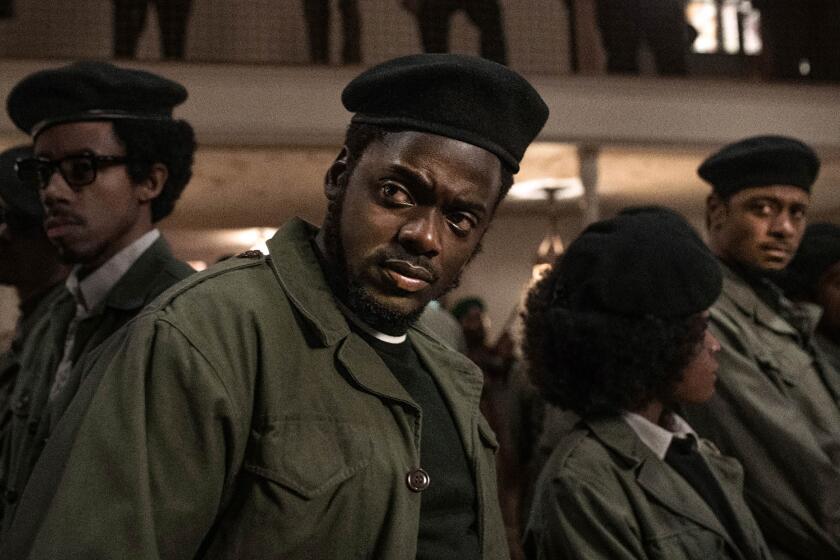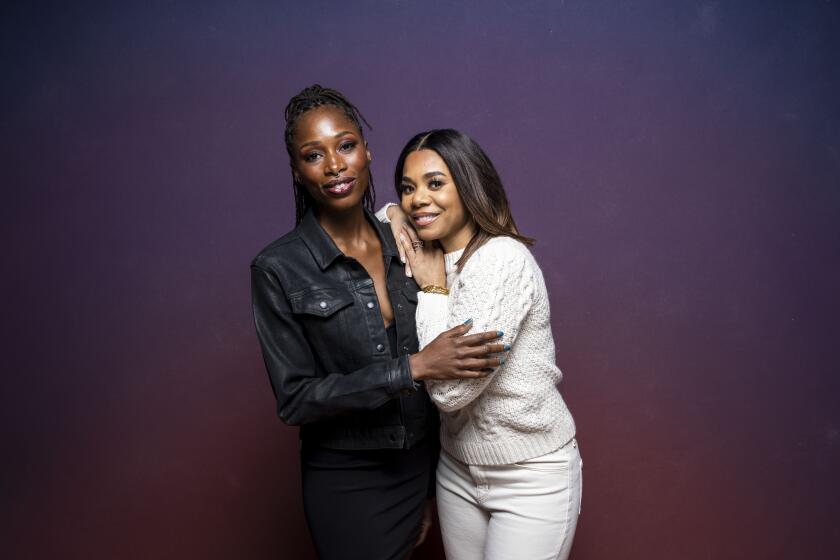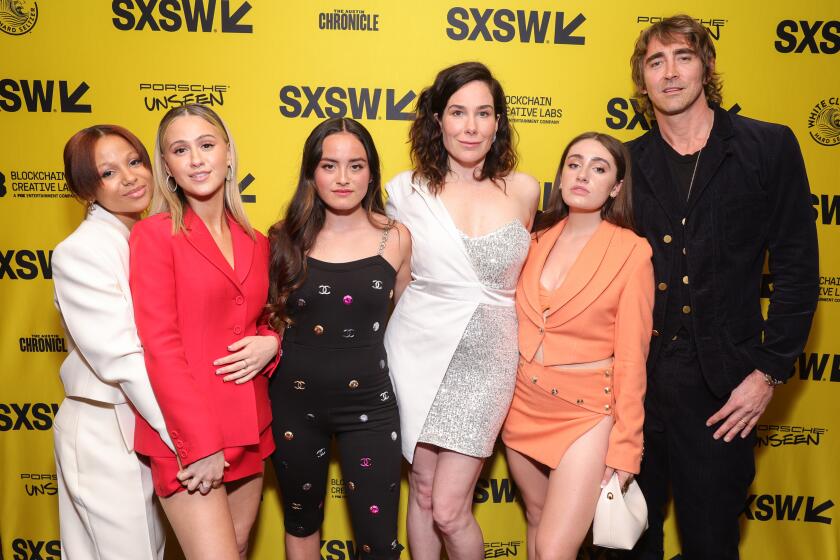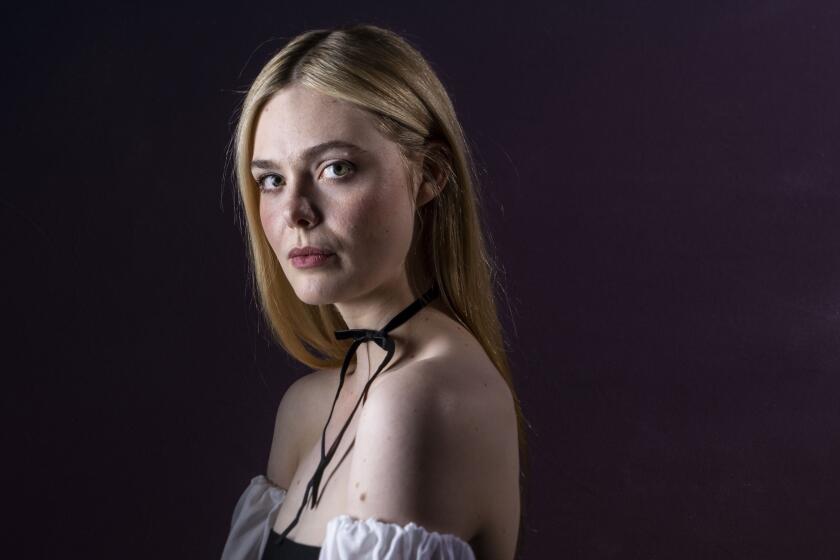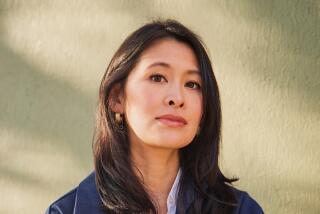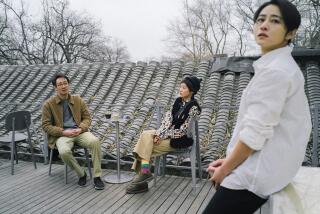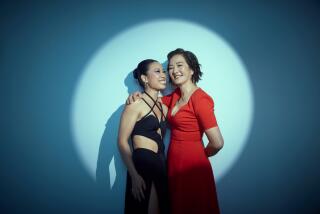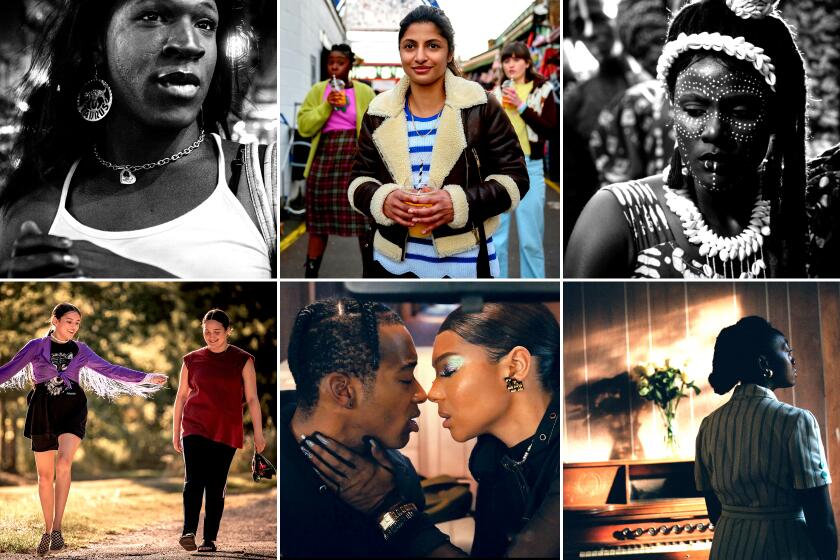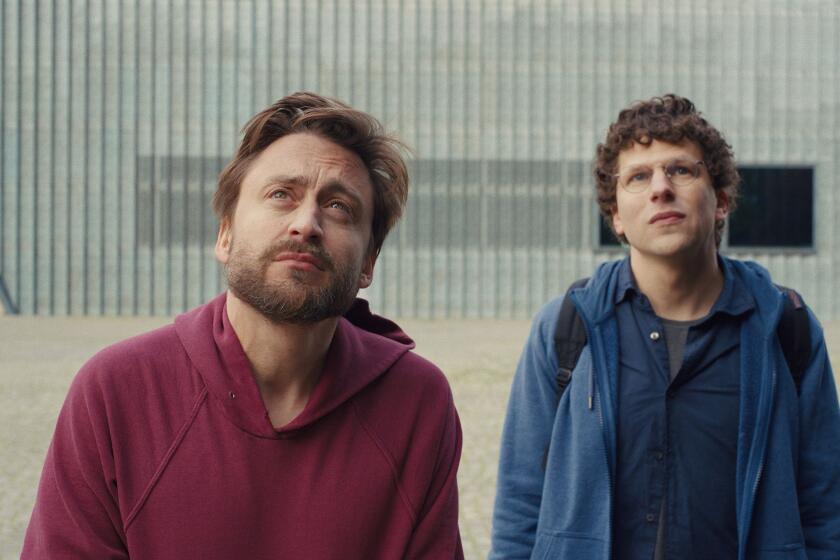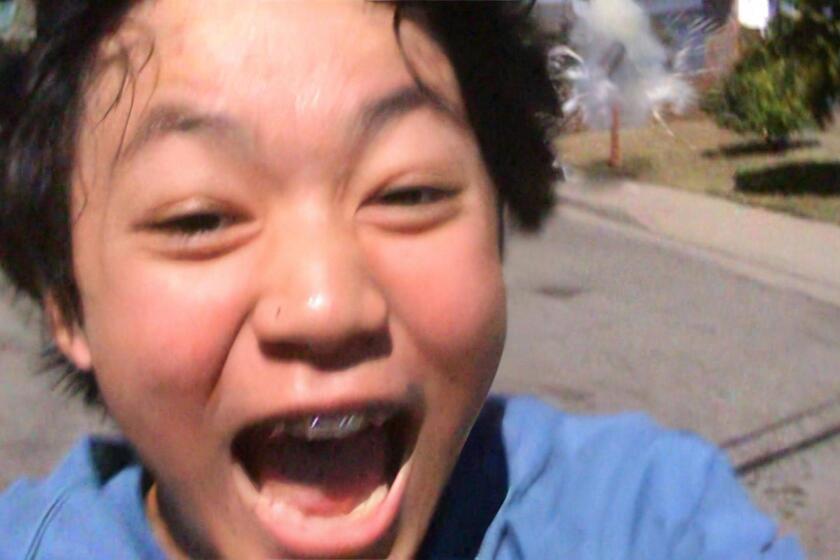Kate Tsang’s film debut combines ‘weirdo’ magic with the joy of Asian American family life
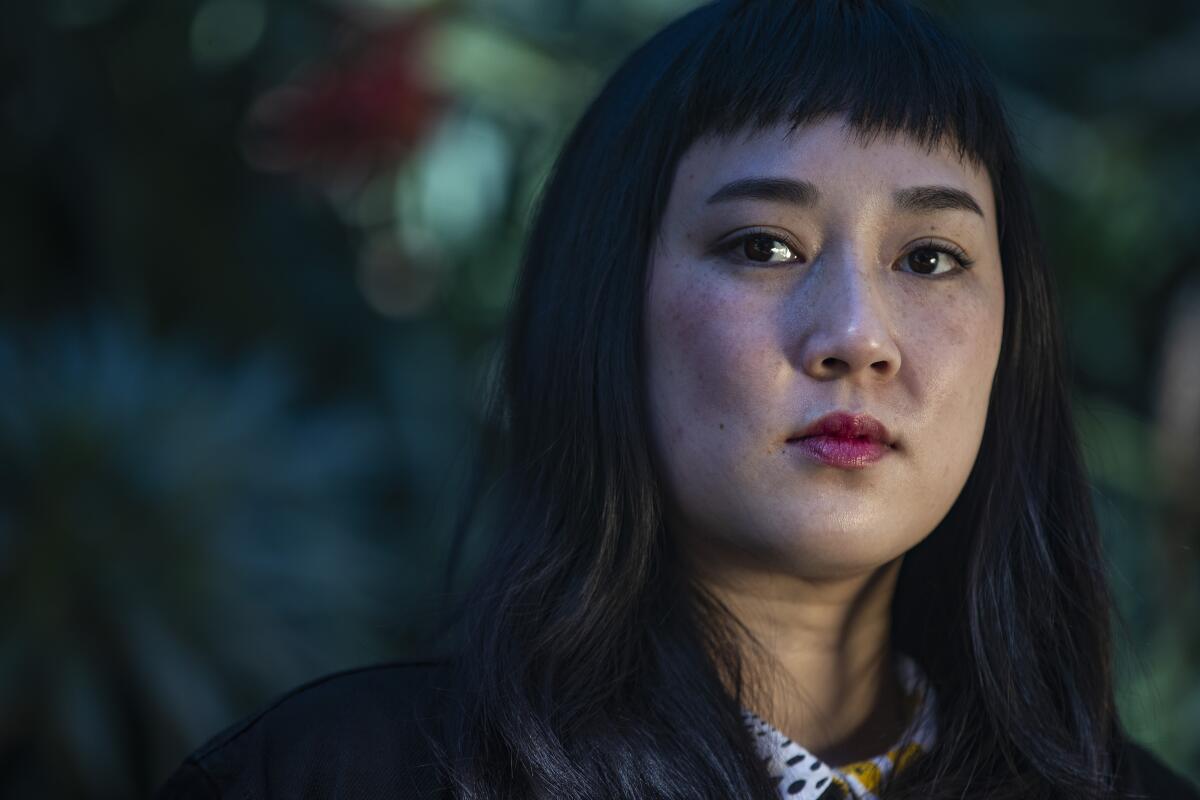
“Marvelous and the Black Hole” will make you believe in magic.
Filmmaker Kate Tsang’s feature directorial debut follows Sammy (Miya Cech), a 13-year-old delinquent struggling with her grief over the death of her mother. After her exasperated father enrolls her in a summer business class, Sammy meets the gruff magician Margot (Rhea Perlman), who is on her way to perform a show for kids. And through this new friendship — and some magic lessons — things start to change for Sammy.
Tsang cites her relationship with her grandfather, who helped take care of her when she was growing up, as the inspiration for this story.
“It’s very much based on how my grandpa helped me,” said Tsang. “I appreciate people who come into your life [and] disrupt it for better, unexpectedly. Which is probably why I like movies like “[My Neighbor] Totoro” — there’s a fantasy of this person who gets you who will come and rescue you. That’s sort of the nugget of how Margot was formed.”
“Marvelous and the Black Hole,” premiering Sunday at the Sundance Film Festival, is a recipient of AT&T and the Tribeca Film Festival’s Untold Stories grant, which is awarded to projects by filmmakers from underrepresented backgrounds. Tsang and producer Carolyn Mao used the opportunity to work with an inclusive crew behind the camera.
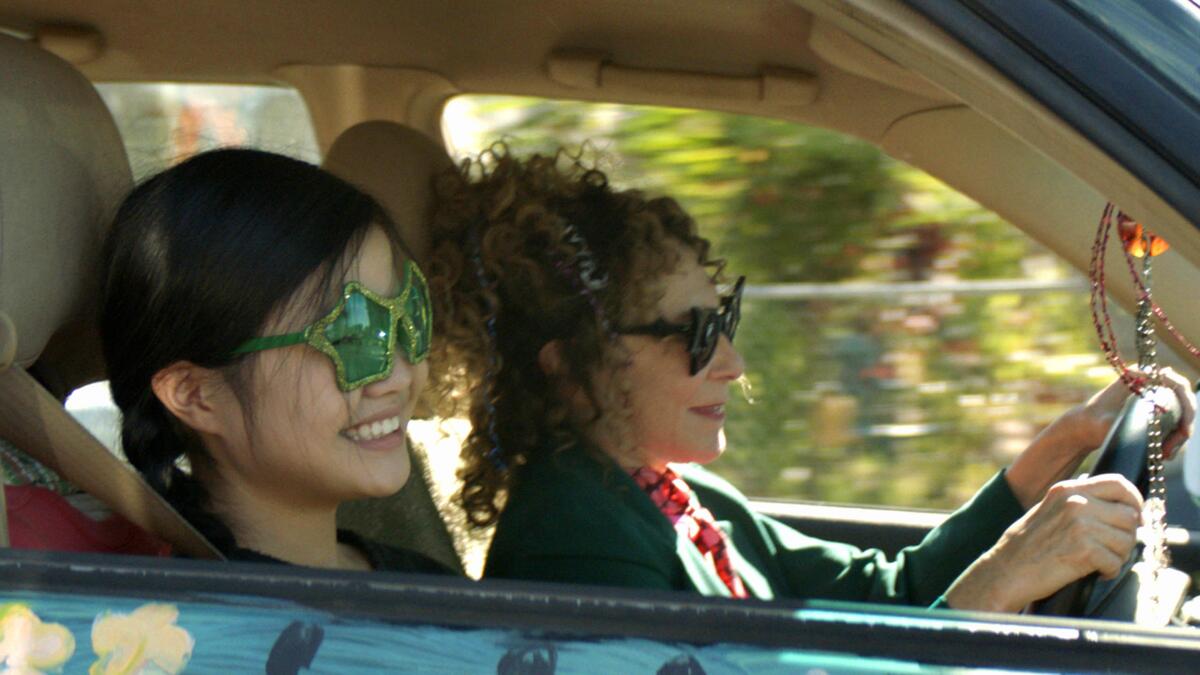
Although magic is at the center of the heartfelt coming-of-age tale, the film is also a tribute to the power of stories. It’s another theme Tsang, a writer on animated TV shows such as “Steven Universe Future” and “Adventure Time: Distant Lands,” credits to her grandfather.
“When I was starting to write this and was thinking about my grandfather and my career as a filmmaker, I realized I get my love of storytelling from him and I do what I do because of his influence,” said Tsang. “This film is very much a celebration of storytelling and that desire to want to connect and communicate.”
Tsang discussed “Marvelous and the Black Hole,” Asian American representation and sleight-of-hand magic during a recent video call with the Los Angeles Times. This conversation has been edited for length and clarity.
What was your inspiration for this story?
Growing up, my parents got divorced, so I was bouncing between their homes in Northern California and Hong Kong for a bit. That was a really isolating experience, and I was very depressed. When I came back to Northern California, my grandpa came from Hong Kong to take care of me, and he could see I was struggling. And he saw me. He didn’t judge me. He just validated me. He reached out, and he was the friend I needed at the time.
At night, I had really bad insomnia, and when I did fall asleep, I had bad nightmares. So he would tell me stories to help me go to sleep at night. It was only later that I realized that these fairy tales that he was telling me were actually some of his own experiences with the Japanese occupation of Hong Kong, [which] he had just transformed into these wondrous fairy tales for me. That taught me the power of transforming pain into something beautiful, into something powerful and helpful for somebody else. That’s the same lesson that Margot teaches Sammy.
I picked magic as a thing that bonds Sammy and Margot because magic is all about making the impossible possible. And, to Sammy, getting over the grief of her mother’s death seems like an impossible task. But by working with Margot and performing these little miracles of sleight-of-hand magic every day, it opens her up to possibility and wonder again.

I found Sammy’s anger and grief — and being so full of feelings you can’t express — extremely relatable. What went into developing her character?
When I moved from Northern California and to Hong Kong, I only spoke English, but I was thrown into Cantonese schools. So I had a language barrier there. And then, when I came back to the U.S., I had lost all my English [and had] a language barrier there. So a lot of it also stems from that frustration of not being able to communicate or tell people how you’re feeling.
The things that made me feel a lot better were films. Films about weirdos and fantasy creatures, like “Edward Scissorhands.” I loved them, and they did make me feel better and some joy and less alone, but there was never anybody that looked like me. So I really wanted to make something for my younger self with this.
I looked through a lot of my old teenage photos, to start at that source. But there’s also this artist named Hellen Jo, who draws these amazing illustrations of these confident, angry Asian American girls. And when I stumbled upon her illustrations — years ago, before I started my script — I knew there was something powerful there that I wanted to craft this character around. It sort of put all those thoughts swirling in my head into a visual form.
A wide range of narrative and documentaries highlights to watch for at the first virtual Sundance Film Festival.
When was the first time you felt you were reflected on screen?
I’ve always been able to identify with monsters in movies or the weirdo ghosts. But being able to actually see somebody that really looks like me on the screen. … Watching “Crazy Rich Asians,” and hearing all the different Chinese dialects, it really touched me. And seeing their faces huge on the screen, it did something to me. Like, “yes, this is what I need.” It’s not a story I relate to at all, but I need more of this and I need it to be about more people like me.
What was important to you in crafting this Asian American family?
I’m most interested in seeing Asian American stories about characters that are thriving. That are living and doing things that are bringing them joy, [and] having dreams and goals outside of just being affected with conflicts that have to deal with being Asian. So for me, crafting this family, it’s a story about a girl just trying to get through grief, a dad who wants to be a good dad, and a sister who wants to just escape and be a warrior. Those are the kinds of stories I’m interested in.

How did you script the magic performed in this movie?
For research on magic, I went to the Magic Castle and took a class there and fell in love with this art form. I met these wonderful women magicians who encouraged me, took me under their wing [and] taught me their secrets and really wanted me to learn about this art form.
I had just moved to L.A. so I felt kind of alone. But it was through magic that I found a community in L.A. with these women. So ... in a way, my journey was also mirroring Sammy’s journey to finding these magicians as well.
And at first, when I was learning about all the different magic tricks and all the technical stuff, I found myself writing a little bit too technically. Then I showed it to a magician who was like, “Don’t do that, just write for the camera. What do you actually want to see? What would bring that feeling?”
So I went back and wrote my fantasy version of what would happen in these tricks. Then our magic consultant, Kayla Drescher, who is also my teacher, she took what I wrote and actually did the technical stuff with it. Figured out how to do it, made the props and then taught the actors.
Did you encounter anything you hadn’t thought to prepare for during the production?
With indie films, it’s always a bag of unexpected surprises. One big challenge that happened early on was the actor who was originally playing Angus, the dad, had a family emergency so he had to step away from the project 24 hours before we started shooting. So the train is already going, it’s 24 hours before leaving. Carolyn and I had to scramble and find somebody who would not only be talented but also want to just dive right in the next day. We called everybody we knew, and the Asian American film community really came through for us and put us in touch with Leonardo Nam, who was so game and just jumped right in.
That and we were shooting in Santa Clarita, so we had to also deal with wildfires that first week.
What was your inspiration for the sibling dynamic?
I’m an only child, but I did grow up with cousins. We lived together in a very small apartment, and there was definitely a jostling of hierarchies, and definitely wrestling. A lot of it is based on some of the cousins I’ve lived with, and at the time, I was definitely angry and got into them. But having had time away and growing up, now we totally get along. Being able to infuse that humanity back into the older sister and seeing how these two sisters are dealing with the same events in very different ways was important to me. Patricia grieves in her certain way of escapism, and Sammy grieves in her way of anger and violence. But seeing how they can come together, that was really important to me.
More to Read
Only good movies
Get the Indie Focus newsletter, Mark Olsen's weekly guide to the world of cinema.
You may occasionally receive promotional content from the Los Angeles Times.
